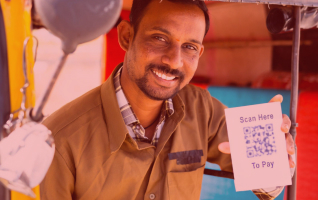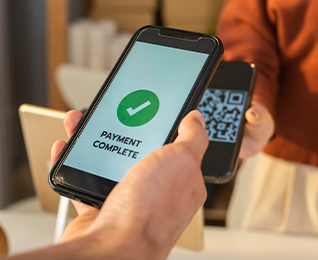The 27th of June has been declared as the World ATM Day. It was on this day in 1967that the first Automated Teller Machine was installed at a Barclays Bank branch in London. The world owes a lot to John Shepherd Baron, the inventor of the ATM. This machine has now become common place in most parts of the world today. They are found at bank branches, busy marketplaces, airports, hospitals, train and bus stations, shopping malls, universities, large townships, tourist spots, convention centres and even in trains and ships! We can even find ATMs in the Andaman & Nicobar Islands and at high mountain ranges in the Ladakh, Arunachal Pradesh and Sikkim region in India!
Over the last 54 years, the ATM has metamorphosed from a clunky, stand-alone contraption to a sleek-faced, multi-networked, IOT enabled device which can do many more things than dispensing cash. ATMs today have the capability of dispensing cash without inserting a card. Automated Cash Recyclers (ACRs) can not only dispense cash, but also accept different denominations of deposit directly into customer accounts. ATMs are also getting integrated into multi-function kiosks which can offer a wide range of services, from account opening to the issuance of debit cards, apart from the bill payment and funds transfer capabilities they already have.
ATMs came to India somewhere in the eighties through the branches of foreign banks and were the most coveted and awe-inspiring technology marvels of that period. In the early nineties, a few Indian banks caught on to it and by the mid-nineties, with the setting up of new private sector banks, ATMs started becoming a necessity at all metro and urban branches, to provide24X7 access of cash to customers. The ATMs installed in those days were off-line i.e. not connected to any backend but dispensing cash based on limits set and encoded on the card. They then became semi-online i.e. connected to the server at the branch and finally, in the late nineties and early years of the 21st century, they became fully online i.e. connected to a centralized switching application. But customers could still not withdraw from any bank’s ATM. They had to necessarily use the ATM of their bank. In 1997, IBA (Indian Banks Association) set up the Swadhan network, the first network of shared ATMs in India. FSS played a pivotal role in the formation of Swadhan network. In the early 2008, with the setting up of the National Financial Switch (NFS) under the aegis of NPCI (National Payments Corporation of India Ltd.) which is a not-for-profit Section 8 company set up by banks, inter-operability between ATMs of various banks connected to the NFS network, became a reality.
Over the last twenty years, ATMs in India have changed from being an exclusive device for premium customers in urban areas to being the agents of social change, supporting financial inclusion across towns and remote villages of India. Mass banking could not have been possible in this country without ATMs providing the much-needed cash dispensation points for millions of customers. All the ATMs in India together dispense an average of 2600 billion rupees per month, which is more than 10% of the currency in circulation in the country. Banks have effectively used ATMs to provide basic banking services to customers at any time of the day and in a cost-effective manner. ATMs have even reached out to the populace in times of need. ATMs on mobile vans have provided salaries to workers at remote factory locations; these vans have also gone to places affected by natural calamities, providing much needed cash to the population. ATMs on wheels, have driven down to large societies to enable residents to withdraw cash during the lockdown last year. ATMs provide wages to plantation workers in the remote tea estates of Assam. One can never forget the long winding queues at the ATMs in the aftermath of the demonetization announcement made by the Government of India on November 8, 2016.
Demonetization has been a turning point for ATM growth in India. From more than 8-10% growth year on year in the number of ATMs prior to 2016, the growth has slowed down to 2-3% on an annual basis. But the country still needs a lot more ATMs. As compared to the world average of 50 ATMs per 1 lakh population, India is way below, at an average of 28 ATMs per 1 lakh population, even much lower than China, which is at 98 ATMs per one lakh population and Brazil, which is at 105 ATMs per one lakh population. The distribution of ATMs within India is also very skewed, with metropolitan cities having 53 ATMs per one lakh population, urban areas having 69 ATMs per one lakh population, semi-urban areas having 53 ATMs per one lakh population and the rural areas having a paltry 9 ATMs per one lakh population. Thus, the need for more ATM deployment is very apparent. But over the last few years, the increasing cost of logistics and regulatory compliance for ATMs and the emergence of digital payment options like UPI, had made banks re-think their ATM deployment and expansion strategy.
Banks and independent ATM deployers (IADs), have now realized that ATMs or their advanced version, the ACR (Automated Cash Recycler) are very much needed in India to service the cash requirements of population. Digital payments, especially UPI, may have grown multi-fold during this period, but cash remains the engine oil of the economy. And what best way to dispense cash and accept deposits than through the ubiquitous ATM/ACR? A further boost has been given to this, with the increase in interchange rate i.e. the charge per transaction that an ATM owning bank/IAD will levy on the bank that issued the card. This increase will be effective from the 1st of August this year.
In the coming days, we will be seeing ATMs reclaiming their rightful spot as the accelerators of economic and inclusive growth. They will surely jostle for space among the other dispensation models like UPI, micro-ATMs, e-wallets etc. but the need of this great country is such that there will be enough play for all methods of end point dispensation.
Radha Rama Dorai
Senior Vice President - ATM Business






